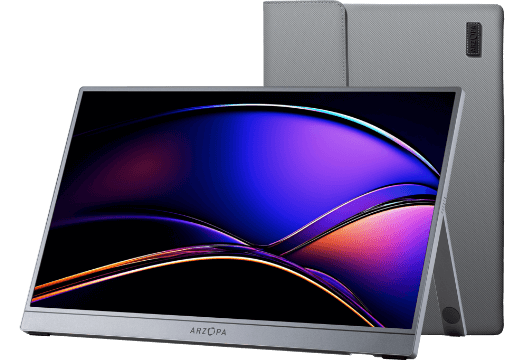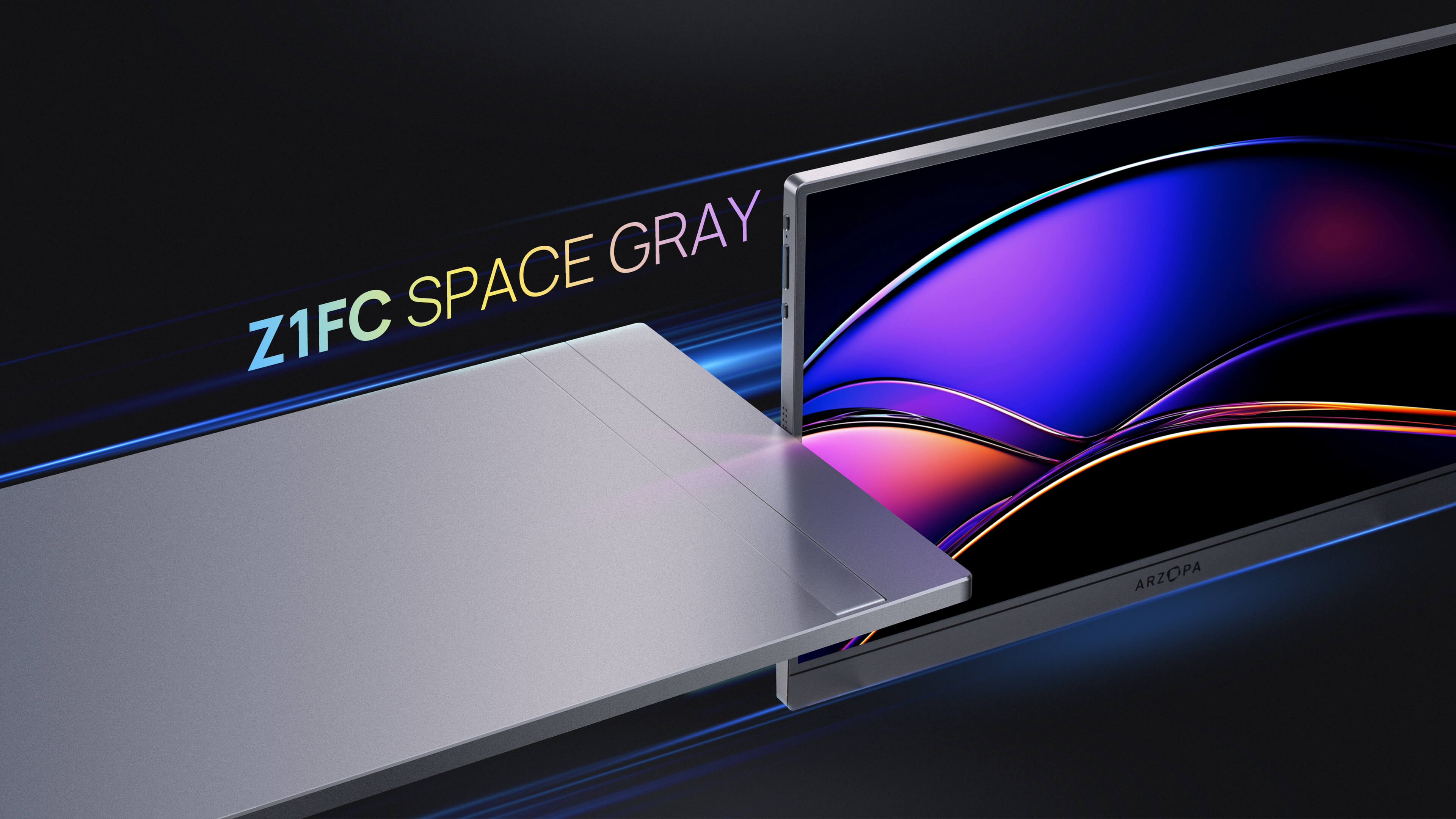Are you tired of the tangled mess of cables behind your desk? Do you want to maximize your screen real estate without sacrificing your workspace's tidiness? Look no further than daisy chaining your monitors! In this comprehensive guide, we'll walk you through everything you need to know to set up a seamless, clutter-free multi-monitor setup.
Understanding Daisy Chaining
Daisy chaining is a method of connecting multiple monitors using a single cable output from one monitor to the input of another. This technique reduces cable clutter, simplifies setup, and enhances productivity by allowing you to extend your desktop across multiple screens.
The latest connection types that support daisy chaining are DisplayPort 1.2+, Thunderbolt 3 and 4, and USB-C with DisplayPort alternate mode. Each of these technologies has its specific strengths and is suited for different use cases and user requirements.

DisplayPort 1.2+ is a high-speed digital video interface that can handle up to 6 monitors at resolutions of up to 4K (3840 x 2160) at 60 Hz. Thunderbolt 3 and 4 combine the functionality of DisplayPort and PCIe, allowing for both video and data transmission over a single cable. Thunderbolt 3 supports up to 6 daisy-chained monitors at 4K resolution, while Thunderbolt 4 supports up to 6 monitors at 5K resolution (5120 x 2880) at 60 Hz. USB-C with DisplayPort alternate mode can support up to 4 monitors at 4K resolution.
Hardware Requirements
To successfully daisy chain monitors, specific hardware requirements must be met on both the monitors and the computer. This includes DisplayPort MST support, Thunderbolt or USB-C ports, and compatibility with the graphics card.
DisplayPort Multi-Stream Transport (MST) is a technology that allows multiple monitors to be connected to a single DisplayPort output. Both the computer and the monitors must support DisplayPort MST to facilitate this setup. The computer's graphics card and the monitors' DisplayPort inputs must be MST-capable to ensure seamless connectivity and display of multiple screens.
In addition to DisplayPort MST support, the computer must have Thunderbolt or USB-C ports to connect the monitors. Thunderbolt 3 ports, in particular, are widely used for daisy chaining due to their high bandwidth and versatility. These ports can support up to six monitors, depending on the graphics card and the specific implementation.
The graphics card is a critical component in daisy chaining monitors. It must be capable of handling the increased video output and processing the multiple streams. Graphics cards with sufficient video memory and processing power are necessary to ensure smooth performance. Compatibility with the computer's motherboard and the monitors' specifications is also crucial to avoid any technical issues.
The monitors themselves must also meet certain specifications to support daisy chaining. They should have DisplayPort MST-enabled inputs and be compatible with the computer's graphics card and output ports. The monitors' resolution, refresh rate, and response time must also be considered to ensure optimal performance.
Step-by-Step Setup
Now that you understand the hardware requirements, let's dive into the step-by-step process of connecting your monitors in a daisy chain.
Step 1: Determine the Connection Type
Before starting, identify the available ports on your computer and monitors. Ensure you have a compatible connection type, such as DisplayPort, Thunderbolt, or USB-C. These ports support daisy chaining, which allows you to connect multiple monitors to a single port on your computer.
Step 2: Prepare the Cables
Gather the necessary cables for your chosen connection type. For DisplayPort, you will need DisplayPort cables. For Thunderbolt and USB-C, you can use the same cables, as they are compatible with both standards.
Step 3: Connect the First Monitor
Connect the first monitor directly to your computer using the chosen connection type. Ensure the cable is securely plugged into both the computer and the monitor.
Step 4: Connect Subsequent Monitors
To connect additional monitors, use the output port on the previous monitor to connect to the input port on the next monitor. This creates a daisy chain where each monitor is connected to the previous one. For example, if you are using DisplayPort, connect the DisplayPort output from the first monitor to the DisplayPort input on the second monitor.

Step 5: Configure the Connections
Once all monitors are physically connected, configure the connections via your computer's display settings. This will vary depending on your operating system:
-
Windows: Right-click on an empty area of the desktop, select "Display settings," and then choose the "Multiple displays" option. You can then arrange the monitors to match their physical layout.

-
macOS: Go to "System Preferences," then "Displays," and select the "Arrangement" tab. Drag the monitor icons to match their physical layout.

Step 6: Test the Setup
Verify that all monitors are displaying correctly and that you can move windows and applications across the screens seamlessly.
Driver Updates and Compatibility Checks
The importance of driver updates and compatibility checks cannot be overstated when it comes to daisy-chaining monitors. Updated graphics card drivers play a pivotal role in ensuring seamless functionality when daisy-chaining monitors. These drivers act as the communication bridge between the graphics card and the operating system, allowing the system to effectively utilize the graphics processing unit (GPU).
To ensure that your graphics card drivers are up-to-date, follow these steps:
- Identify the Graphics Card: First, identify the type of graphics card installed in your system. This information can be found in the system settings or by using tools like the Device Manager in Windows or System Information on macOS.
- Visit the Manufacturer's Website: Go to the website of the graphics card manufacturer (e.g., NVIDIA or AMD) and navigate to the driver download section.
- Check for Updates: Enter your graphics card model and operating system to check for available updates. The manufacturer's website will provide a list of compatible drivers.
- Download and Install: Download the latest driver and follow the installation instructions. Ensure that you download drivers compatible with your specific graphics card model and operating system.
Hardware compatibility is also crucial when daisy-chaining monitors. Incompatible hardware can lead to a range of issues, including display problems, system crashes, and performance bottlenecks. To ensure hardware compatibility, verify that the graphics card can support the number and type of monitors you plan to connect, ensure that the monitors are compatible with the graphics card and each other, and check that the cables used to connect the monitors are compatible with both the monitors and the graphics card.
Troubleshooting Common Issues
Despite following all the steps and ensuring compatibility, you may still encounter issues when daisy chaining monitors. Here are some common problems and their solutions:
Display Recognition Issues
One of the most common problems users face when daisy chaining monitors is display recognition issues. This can occur when the system fails to detect one or more monitors in the chain. To troubleshoot this issue, check cable connections, update graphics drivers, disable and re-enable monitors, use the correct DisplayPort version, and check monitor settings.
Hardware Troubleshooting Techniques
Hardware issues can also cause problems in daisy-chained setups. To troubleshoot hardware issues, check for faulty cables, inspect the monitors for any signs of physical damage, ensure that the power supply is sufficient to power all the monitors in the chain, and try using a different port or cable type.
Software Solutions
Software issues can also cause problems in daisy-chained setups. To resolve software issues, update the operating system, use display management software like AMD's Eyefinity or NVIDIA's Surround, and disable and re-enable graphics drivers.
Also see: Arzopa Z1FC 144Hz Portable Gaming Monitor | 16.1" Screen
Extend your screen at the office, at home or on the go with this convenient, compact display. Conveniently set up your monitor to the left, right or behind your laptop. The dual USB-C ports on each side allow for versatility and better portability.
Arzopa Z1FC 144Hz Portable Gaming Monitor 16.1" Screen

- 16.1 Inch Full HD (1920x1080p) IPS with a premium aluminum design.
- 1.7 lb weight and 0.3-inch thickness make it ideal for on-the-go use.
- Supports PS5, Xbox, Switch, Steam Deck, PCs, phone, and more.
- Includes a built-in stand for both portrait and landscape viewing.
Advanced Techniques
For those looking to take their daisy-chained setup to the next level, there are several advanced techniques to consider.
Integration of USB-C Hubs
USB-C hubs play a crucial role in daisy chaining monitors by allowing multiple devices to be connected to a single host. These hubs support multiple USB-C ports, enabling the connection of multiple monitors, peripherals, and accessories. Advanced USB-C hubs often come equipped with features such as power delivery, high-speed data transfer, and display output.
Power Management
Effective power management is vital in daisy chaining setups to ensure that all connected devices receive the necessary power without overloading the system. Advanced power management techniques involve the use of power delivery protocols like USB Power Delivery (PD) and QuickCharge. These protocols allow for efficient power distribution, ensuring that each device receives the optimal amount of power.
USB Passthrough
USB passthrough is another critical aspect of advanced daisy chaining techniques. It enables the connection of multiple devices to a single host without the need for additional power sources. This is particularly useful in setups where multiple monitors are connected, as it allows for the efficient use of available power resources. Advanced USB-C hubs often feature USB passthrough capabilities, ensuring seamless connectivity and power management.
Best Practices for Optimal Display Performance
To ensure optimal display performance when daisy chaining monitors, several best practices should be employed.
Color Calibration
Color calibration is crucial for achieving consistent and accurate color representation across multiple monitors. This process involves adjusting the color settings on each monitor to ensure that they are displaying the same colors at the same brightness and contrast levels. Use calibration software, set the color profile, adjust brightness and contrast, and verify calibration to achieve consistent colors across all monitors.
Managing Display Settings for Multiple Monitors
Managing display settings for multiple monitors is critical to ensure seamless integration and optimal performance. Ensure that the display settings are consistent across all monitors, place the monitors in a way that minimizes distractions and ensures comfortable viewing, and properly manage cables to reduce clutter.
Addressing FAQs and Misconceptions
Several common misconceptions surround daisy chaining monitors. It's important to note that daisy chaining monitors does not inherently reduce performance, but performance may be affected if the monitors are not properly calibrated or if the system is not capable of handling the increased display load. Additionally, the type of cable used is critical, and it is recommended to use high-quality cables that support the required bandwidth and resolution. Finally, daisy chaining monitors may not be compatible with all systems, as the system must have the necessary hardware and software capabilities to support multiple monitors.
Conclusion
Daisy chaining monitors is an excellent way to maximize screen real estate while minimizing cable clutter. By following the steps outlined in this guide, you can set up a seamless, clutter-free multi-monitor setup that will enhance your productivity and streamline your workflow.
Remember to ensure that your hardware is compatible, keep your drivers up-to-date, and employ best practices for optimal display performance. With a little bit of know-how and some careful planning, you can unlock the full potential of daisy chaining and take your workspace to the next level.
We hope this guide has been helpful in your journey to create the ultimate clutter-free workspace. If you have any questions or comments, please feel free to leave them below. And if you found this guide useful, please consider sharing it with your friends and colleagues who may also benefit from a daisy-chained monitor setup.












